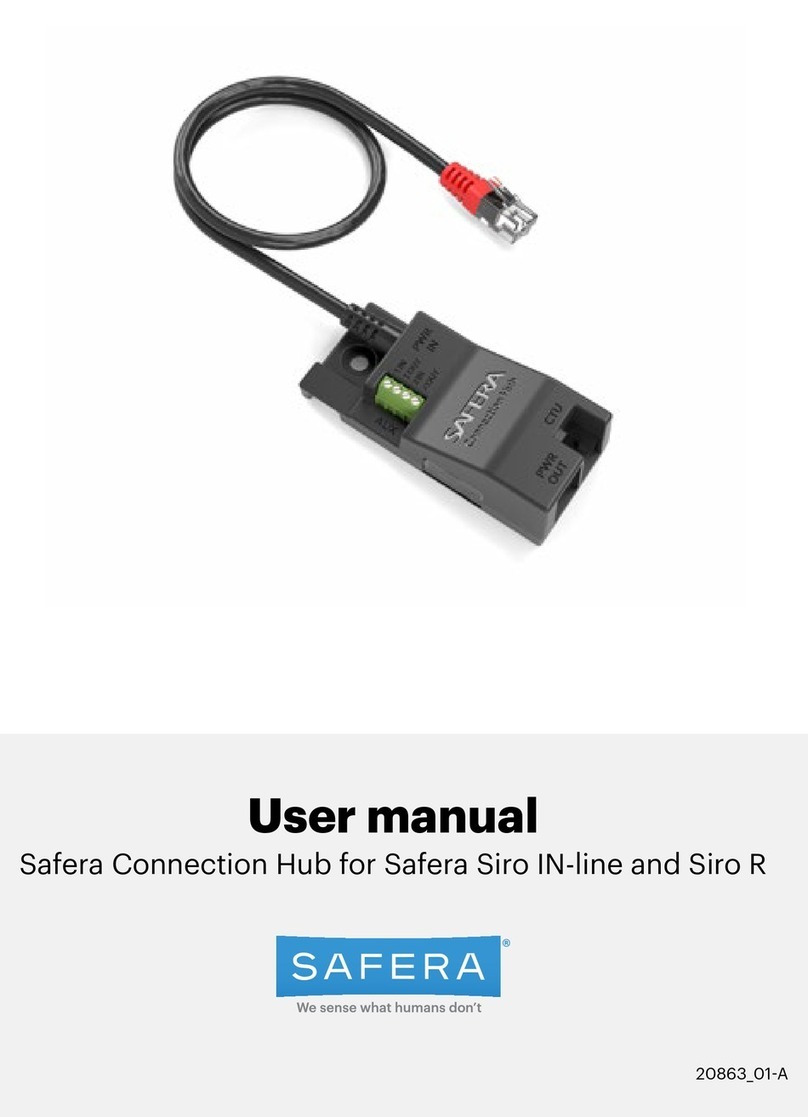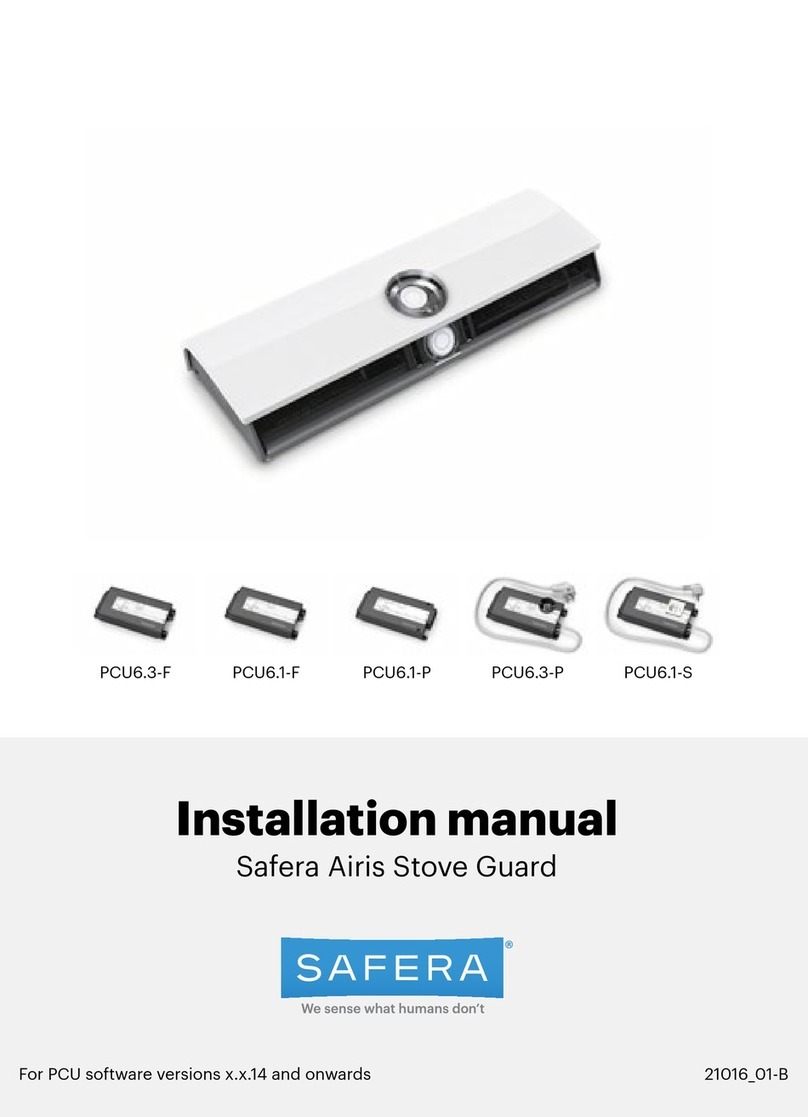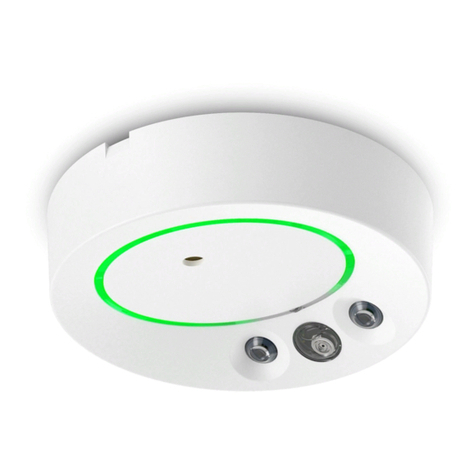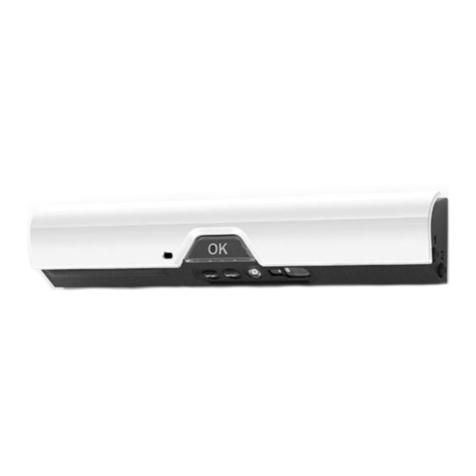
32
❸
Contents
1. Preparations
2. Installation
3. Installation troubleshooting
4. Manual adjustment mode
5. Optional features
• AUX-connection
• Water leakage sensor
Warnings
Follow these instructions carefully and
pay particular attention to the instruc-
tions marked in the following way:
ѥWARNING
Follow instructions marked with a
warning accurately to prevent injury
to persons and damage to property.
⚐ATTENTION
Follow instructions marked with a
note carefully to prevent damage to
property.
ѧHINT
Hints give you useful advice on using
the appliance.
1. Preparations
ѥWARNING
Read user and installation manual be-
fore using or installing the appliance
Install and check the application ac-
cording to the instructions. Safera is
not liable for any damage or expenses
caused by inappropriate installation.
1.2 Package content
Check that the Stove Guard is compat-
ible with the cooker (see section 1.1).
If the connection cord is damaged, it
must be replaced by the service per-
sonnel of the manufacturer or their
representative to avoid hazards.
All electrical connections must be
carried out by a qualiied electrician.
⚐ATTENTION
If the appliance was stored in a cold
space, it must be allowed to warm
up to room temperature before con-
necting it to mains power.
1.1 Compatibility
Safera Stove Guard is compatible with
most electrical cookers, hobs and ovens
meant for household use:
• Traditional cast-iron cookers and hobs
• Ceramic cookers and hobs
• Induction cookers and hobs
• Cookers and hobs equipped with a
timer, afterheat indicator, child proof
lock or integrated switch-o system
Safera Aurora is compatible with cook-
ers no wider than 90 cm. See compat-
ible kitchen layouts in chapter 2 and
installation step 2/3.
Power control unit Ⓒ (various
models available)
Sensor unit Ⓐ with mounting
bracket Ⓑ and 4 x batteries
(AA/LR6)
User and Installation
Guides
Remote control Ⓓ
with battery CR 2032
Mounting screws (2x)
ѥWARNING
Please contact your vendor if you notice
anything unusual about the appliance.
Check the product and the contents of the package before installation:
❶ ❷
❹
❺
❻
❶Adjustment button 1
❷Adjustment button 2
❸OK-button
❹Indicator light
❺Mains voltage indicator (optional)
❻Sensors
ѧHINT
The sensor unit and the remote con-
trol have identical button conigura-
tions so you may use either one to op-
erate all functions of the stove guard.































